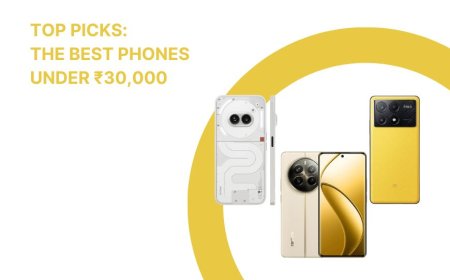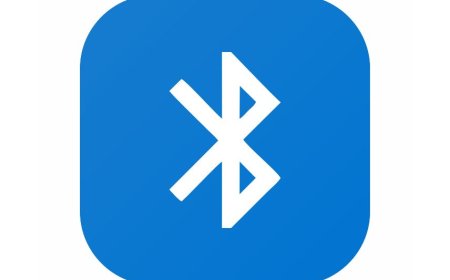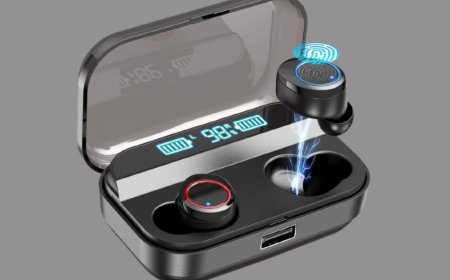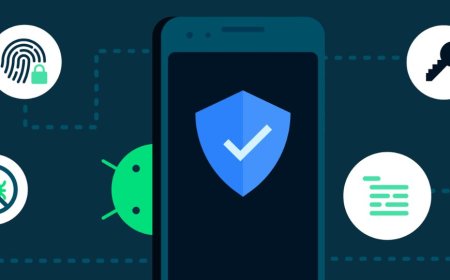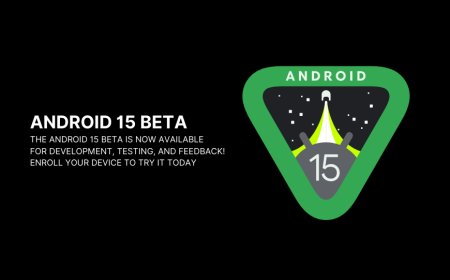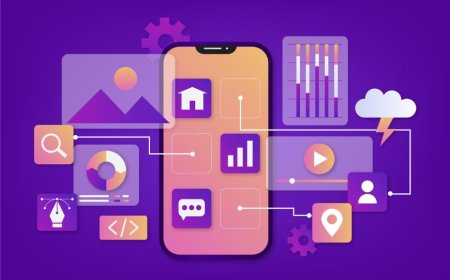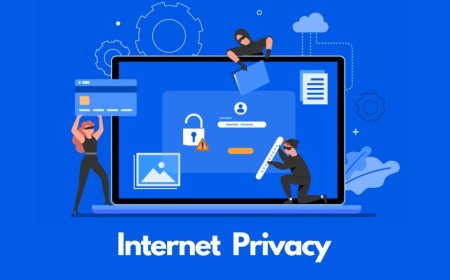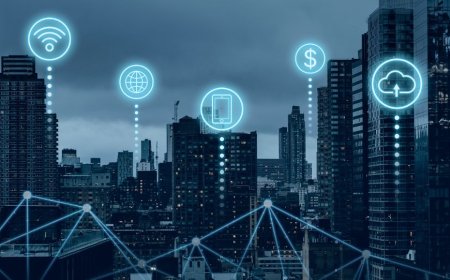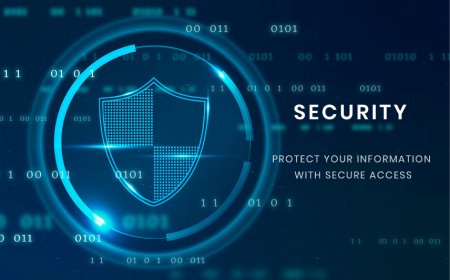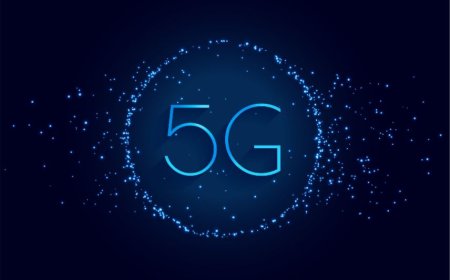The Internet of Things (IoT): A Deep Dive into Connected Living
Discover the endless possibilities of the Internet of Things with Tectoks, your ultimate guide to connected living. Dive deep into the world of IoT today!
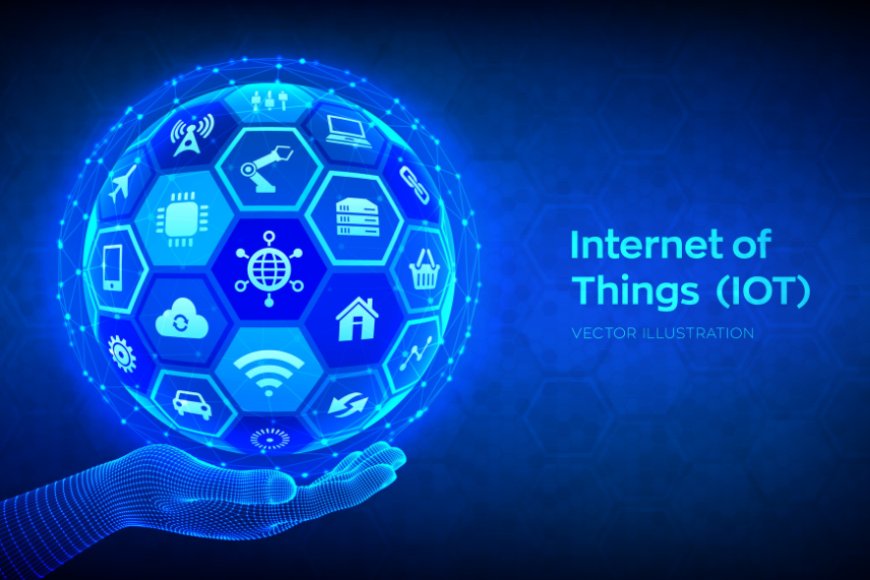
Table of Contents:
-
Introduction
-
IoT Architecture
-
IoT Applications
-
IoT Platforms
-
IoT Standards
-
IoT Protocols
-
IoT Security
-
IoT in Healthcare
-
Future Trends in IoT
-
Conclusion
1. Introduction
The Internet of Things (IoT) is a network of physical devices, vehicles, appliances, and other objects that are embedded with sensors, software, and network connectivity that allow them to collect and share data. IoT enables these devices to communicate with each other and with other internet-enabled devices, creating a vast network of interconnected devices that can exchange data and perform a variety of tasks autonomously.
IoT is important for modern society because it can provide many benefits, such as:
-
Automation: IoT can help reduce human intervention and error in various processes, such as controlling smart home devices, managing traffic patterns, or detecting and resolving equipment issues.
-
Conservation: IoT can help optimize the use of natural resources and energy, such as by monitoring water quality, reducing waste, or adjusting lighting and temperature.
-
Big data analytics: IoT can generate vast amounts of data that can be analyzed to gain insights into customer behavior, market trends, operational performance, and other aspects that can help improve decision-making and innovation.
IoT is shaping connected living by enhancing the quality of life and creating new opportunities for individuals and communities. Some examples of how the IoT is improving our lives are:
-
Smart home devices: IoT devices can make our homes more comfortable, convenient, and secure, such as smart thermostats, doorbells, smoke detectors, and security alarms.
-
Wearable technologies: IoT devices can help us monitor and improve our health and fitness, such as smartwatches, fitness trackers, and personal medical devices.
-
Autonomous vehicles: IoT devices can help us travel more safely and efficiently, such as self-driving cars, smart traffic lights, and connected transportation systems.
-
Smart cities: IoT devices can help us create more sustainable and livable urban environments, such as smart water systems, automated street lighting, remote-controlled irrigation, and smart parking meters.
IoT Architecture
The IoT architecture is the structure that enables internet-connected devices to communicate with each other and with other systems. It consists of four main components:
-
Sensors and actuators: These are the devices that collect data from the physical world and perform actions based on commands. They can be embedded in objects, such as smart appliances, wearables, or vehicles, or deployed in the environment, such as cameras, thermometers, or motion detectors.
-
Connectivity: This is the network that connects the sensors and actuators to the data processing and analytics components. It can use various protocols and technologies, such as WiFi, Bluetooth, Zigbee, or cellular networks.
-
Data processing and analytics: This is the component that receives, stores, processes, and analyzes the data collected by the sensors and actuators. It can use various tools and techniques, such as data management systems, analytics platforms, and machine learning algorithms. It can also run applications or algorithms that provide insights or actions based on the data.
-
User interface: This is the component that interacts with the end-users and allows them to access and control the IoT devices. It can include various software and applications, such as mobile apps, web portals, and other user interfaces.
Edge computing is a strategy that involves processing and analyzing data at the edge of the network, near the source of data generation, rather than sending it to a centralized cloud or data center. Edge computing plays an important role in IoT architecture, as it can provide several benefits, such as:
-
Reduced latency: Edge computing can reduce the time and distance required to send data to and from the cloud, which can improve the performance and responsiveness of IoT applications, especially those that require real-time decision-making, such as autonomous vehicles or drones.
-
Reduced bandwidth: Edge computing can reduce the amount and frequency of data that needs to be transmitted to the cloud, which can optimize the network bandwidth and lower the costs associated with data transmission and storage.
-
Increased reliability: Edge computing can enable IoT devices to operate independently of the cloud, which can enhance the availability and resilience of IoT applications, especially in situations where the network connection is unreliable, congested, or unavailable.
-
Improved security and privacy: Edge computing can reduce the exposure and vulnerability of sensitive data by processing it locally rather than sending it over the network. This can help protect the data from unauthorized access, tampering, or breaches and ensure compliance with data protection regulations
IoT Applications
IoT applications are the use cases of the Internet of Things technology, which connects various devices and sensors to the Internet and allows them to communicate and exchange data. Some of the common IoT applications are:
-
Smart Homes: Smart homes are houses that have devices, such as appliances, lights, locks, cameras, televisions, and other objects, that are connected to the internet and can be controlled remotely using a smartphone or tablet. Smart homes can provide convenience, security, energy efficiency, and comfort to homeowners. For example, a smart home can allow the user to adjust the temperature, turn on the lights, monitor the security cameras, or start the coffee maker from anywhere.
-
Industrial IoT (IIoT): Industrial IoT is the use of connected smart devices in industrial applications for purposes such as automation, remote monitoring, and predictive maintenance. IIoT can help improve the productivity, quality, safety, and efficiency of industrial operations. For example, IIoT can enable machines to detect and report faults, optimize the use of resources, or coordinate with other machines.
-
Smart Cities: Smart cities are urban areas that use IoT technology to improve the management and delivery of various services, such as transportation, energy, water, waste, and public safety. Smart cities can enhance the quality of life, sustainability, and resilience of the urban environment. For example, smart cities can use sensors and cameras to monitor and optimize traffic flow, reduce emissions, or manage waste collection.
IoT Platforms
IoT platforms are software or cloud services that enable the development and management of IoT solutions. They provide various tools and functionalities to connect, monitor, control, and analyze data from IoT devices and applications. IoT platforms can help you create secure, scalable, and innovative IoT products for different industries and use cases.
Some examples of popular IoT platforms are:
-
AWS IoT: A collection of cloud and edge services that let you connect and manage billions of IoT devices and route trillions of messages to AWS services without managing infrastructure. AWS IoT supports multiple communication protocols, such as MQTT, HTTPS, and LoRaWAN, and provides device security, data processing, and edge computing capabilities.
-
Microsoft Azure IoT: A suite of cloud and edge services that lets you build customized and flexible IoT applications Azure IoT offers device connectivity, management, and security, as well as data ingestion, storage, and analytics. Azure IoT also integrates with other Azure services, such as AI, digital twins, and mixed reality.
-
Google Cloud IoT: A set of partner-led solutions, built on Google Cloud, that meet the needs of IoT customers Google Cloud IoT leverages Google’s cloud infrastructure, data analytics, and AI to help you optimize your IoT operations, products, and services. Google Cloud IoT also supports various connectivity protocols, such as MQTT, HTTP, and CoAP.
IoT platforms facilitate seamless integration by providing the following benefits:
-
Simplify and accelerate the development and deployment of IoT solutions by offering pre-built components, templates, and SDKs that reduce the need for coding and customization.
-
Enable interoperability and compatibility among different IoT devices, applications, and cloud services by supporting various communication standards, protocols, and APIs.
-
Enhance the performance and reliability of IoT solutions by offering features such as load balancing, fault tolerance, scalability, and elasticity.
-
Improve the security and privacy of IoT solutions by offering features such as encryption, authentication, authorization, and compliance.
IoT Standards
A. Importance of standards in IoT
-
IoT standards are established rules that enable communication and interoperability among IoT devices, applications, and platforms.
-
IoT standards are important because they ensure that all IoT devices have a minimum level of compatibility with each other and with other related devices and applications.
-
IoT standards also help to improve the performance, security, scalability, and reliability of IoT systems.
B. Overview of key IoT standards
-
There are many different IoT standards, depending on the use case, the network layer, and the communication protocol.
-
Some of the most common IoT standards are:
-
MQTT (Message Queuing Telemetry Transport)
-
-
MQTT is a lightweight, publish-subscribe protocol that allows IoT devices to exchange data efficiently and reliably over low-bandwidth and unreliable networks.
-
MQTT is widely used for IoT applications that require real-time, bidirectional, and asynchronous communication, such as smart homes, industrial automation, and remote monitoring.
-
2. CoAP (Constrained Application Protocol)
-
-
CoAP is a web-based protocol that enables IoT devices to interact with web services using RESTful methods.
-
CoAP is designed for constrained devices and networks, such as sensors and actuators, that have limited power, memory, and bandwidth.
-
CoAP is suitable for IoT applications that require low latency, low overhead, and multicast communication, such as smart lighting, smart metering, and environmental monitoring.
-
-
HTTP (Hypertext Transfer Protocol)
-
HTTP is a ubiquitous, stateless protocol that allows IoT devices to communicate with web servers and browsers using request-response methods.
-
HTTP is easy to implement and integrate with existing web infrastructure and applications.
-
HTTP is ideal for IoT applications that require simple, reliable, and secure communication, such as web-based dashboards, cloud services, and data analytics.
-
Zigbee and Z-Wave
-
Zigbee and Z-Wave are wireless protocols that enable IoT devices to form mesh networks and communicate with each other over short distances.
-
Zigbee and Z-Wave are optimized for low-power, low-data-rate, and low-cost IoT devices, such as smart switches, sensors, and controllers.
-
Zigbee and Z-Wave are popular for IoT applications that require high-density, self-healing, and scalable networks, such as smart home, building automation, and security systems.
IoT Protocols
A. Communication protocols in IoT
-
Communication protocols are the rules and standards that enable data transmission and interaction among IoT devices, applications, and services.
-
There are different types of communication protocols for IoT, depending on the use case, the network layer, and the communication model.
-
Some of the most common communication protocols for IoT are MQTT, CoAP, and HTTP. Let’s compare them briefly:
-
MQTT vs. CoAP
-
MQTT (Message Queuing Telemetry Transport) is a lightweight, publish-subscribe protocol that allows IoT devices to exchange data efficiently and reliably over low-bandwidth and unreliable networks.
-
CoAP (Constrained Application Protocol) is a web-based protocol that enables IoT devices to interact with web services using RESTful methods.
-
MQTT is suitable for IoT applications that require real-time, bidirectional, and asynchronous communication, such as smart homes, industrial automation, and remote monitoring.
-
CoAP is suitable for IoT applications that require low latency, low overhead, and multicast communication, such as smart lighting, smart metering, and environmental monitoring.
-
MQTT has a lower message overhead and higher scalability than CoAP, but CoAP has a lower transport layer overhead and supports multicast.
-
MQTT supports security features such as SSL/TLS and username/password authentication, but CoAP supports more advanced security features such as DTLS and OSCORE.
-
HTTP vs. MQTT
-
HTTP (Hypertext Transfer Protocol) is a ubiquitous, stateless protocol that allows IoT devices to communicate with web servers and browsers using request-response methods.
-
MQTT (Message Queuing Telemetry Transport) is a lightweight, publish-subscribe protocol that allows IoT devices to exchange data efficiently and reliably over low-bandwidth and unreliable networks.
-
HTTP is easy to implement and integrate with existing web infrastructure and applications, but MQTT is more efficient and flexible for IoT scenarios.
-
HTTP has a higher message overhead and lower scalability than MQTT, but HTTP has wider compatibility and support than MQTT.
-
HTTP supports security features such as SSL/TLS and basic authentication, but MQTT supports more granular security features such as ACL and QoS.
B. Security considerations in IoT protocols
-
Security is a critical aspect of IoT, as IoT devices collect, process, and transmit sensitive and personal data that can be vulnerable to various attacks and threats.
-
Security considerations for IoT protocols include the following aspects:
-
Confidentiality: The data exchanged by IoT devices should be protected from unauthorized access and disclosure. Encryption techniques can be used to ensure data confidentiality.
-
Integrity: The data exchanged by IoT devices should be protected from unauthorized modification and corruption. Hashing and digital signature techniques can be used to ensure data integrity.
-
Availability: The data exchanged by IoT devices should be accessible and reliable for authorized users and services. Redundancy and fault tolerance techniques can be used to ensure data availability.
-
Authentication: The identity of IoT devices and users should be verified before allowing data exchange. Passwords, certificates, and biometrics can be used to ensure authentication.
-
Authorization: The access rights and privileges of IoT devices and users should be controlled and enforced. Access control lists, roles, and policies can be used to ensure authorization.
-
Accountability: The actions and activities of IoT devices and users should be recorded and audited. Logs, timestamps, and non-repudiation techniques can be used to ensure accountability.
-
Privacy: The personal and sensitive data of IoT devices and users should be protected from unauthorized collection, use, and disclosure. Anonymization, pseudonymization, and consent techniques can be used to ensure privacy.
IoT Security
A. Challenges in IoT security
-
IoT security refers to the protection of IoT devices and the networks they connect to from cyberattacks.
-
IoT security faces many challenges, such as:
-
Lack of encryption: Many IoT devices transmit data without adequate encryption, leaving it vulnerable to interception and manipulation.
-
Weak authentication and authorization: Many IoT devices use default or weak passwords, making it easier for hackers to gain access to them and the networks they use for communication.
-
Software and firmware vulnerabilities: Many IoT devices have short development cycles and low price points, resulting in inadequate security testing and infrequent updates. This leaves them exposed to exploits and malware.
-
Insecure communications: Many IoT devices use wireless protocols that are not designed for security, such as Bluetooth, Wi-Fi, and Zigbee. These protocols can be susceptible to eavesdropping, spoofing, and jamming.
-
Difficulty in patching and updating devices: Many IoT devices are hard to update or patch, either because they have limited connectivity, memory, or battery life, or because they are deployed in remote or inaccessible locations.
B. Encryption and authentication in IoT
-
Encryption and authentication are essential security mechanisms for IoT devices and networks. They ensure data confidentiality, integrity, and availability, as well as device and user identity verification.
-
Encryption is the process of transforming data into an unreadable form using a secret key. Only authorized parties who have the correct key can decrypt the data and access its original form.
-
Authentication is the process of verifying the identity of a device or a user before allowing data exchange. Authentication can be based on passwords, certificates, biometrics, or other factors.
-
There are different types of encryption and authentication methods for IoT, depending on the use case, the network layer, and the communication model.
-
Some of the most common methods are:
-
Symmetric encryption is a type of encryption that uses the same key for both encryption and decryption. Symmetric encryption is fast and efficient, but it requires a secure way to distribute and manage the keys.
-
Asymmetric encryption is a type of encryption that uses a pair of keys: a public key and a private key. The public key can be shared with anyone, while the private key is kept secret. Data encrypted with the public key can only be decrypted with the private key, and vice versa. Asymmetric encryption is more secure and scalable, but it is slower and more complex than symmetric encryption.
-
Public-key encryption is a type of asymmetric encryption that uses public-key cryptography to encrypt and decrypt data. Public-key encryption is widely used for secure communication over the internet, such as SSL/TLS and HTTPS.
-
Neural cryptosystems are a type of encryption that uses neural networks to generate and exchange keys. Neural cryptosystems are based on the concept of synchronization, where two neural networks learn to produce the same output given the same input. Neural cryptosystems can provide lightweight, end-to-end, and keyless encryption for IoT devices.
-
Password-based authentication is a type of authentication that uses passwords to verify the identity of a device or a user. Password-based authentication is simple and convenient, but it is vulnerable to brute-force attacks, phishing, and password reuse.
-
Certificate-based authentication is a type of authentication that uses digital certificates to verify the identity of a device or a user. Digital certificates are issued by trusted authorities and contain information such as the name, public key, and validity period of the certificate holder. Certificate-based authentication is more secure and reliable than password-based authentication, but it requires a certificate management system.
-
Biometric-based authentication is a type of authentication that uses biometric features, such as fingerprints, faces, or voices, to verify the identity of a user. Biometric-based authentication is more accurate and user-friendly than password-based authentication, but it requires special hardware and software, and it may raise privacy concerns.
C. Best practices for securing IoT devices and networks
-
Securing IoT devices and networks requires a holistic and proactive approach that covers the entire lifecycle of IoT systems, from design and development to deployment and maintenance. Some of the best practices are:
-
Follow the security development lifecycle (SDL): The SDL is a framework that ensures security is addressed at each phase of software development, such as training, requirements, design, implementation, testing, and deployment.
-
Implement robust encryption and authentication: Use appropriate encryption and authentication methods to protect data and verify identities. Choose methods that are suitable for the IoT scenario, such as lightweight, end-to-end, and keyless encryption, and strong, unique, and multifactor authentication.
-
Regularly test and update devices: Perform thorough security testing and frequent updates for IoT devices. Testing helps identify and fix vulnerabilities and bugs, while updates help patch security flaws and improve performance.
-
Use secure communication protocols: Use communication protocols that are designed for security, such as MQTT, CoAP, and HTTP, and avoid insecure protocols, such as FTP, Telnet, and SMTP. Also, use secure versions of protocols, such as MQTT-SN, CoAPs, and HTTPS, that support encryption and authentication.
-
Adopt network access control (NAC): NAC is a technique that allows or denies access to a network based on the identity and security posture of a device. NAC helps prevent unauthorized or compromised devices from accessing or infecting the network.
-
Monitor and audit device activity: Monitor and audit the activity and behavior of IoT devices to detect and respond to anomalies, such as unusual data traffic, unauthorized access, or malicious commands. Use tools such as firewalls, intrusion detection systems, and log analysis to enhance visibility and control.
-
Educate and empower users: Educate users about IoT security best practices and potential risks. Promote vital security hygiene, such as using robust passwords, avoiding public Wi-Fi networks, and verifying the authenticity of IoT device apps. Encourage users to promptly update and report any issues with their devices.
IoT in Healthcare
A. Overview of IoT applications in healthcare
-
IoT in healthcare refers to a network of connected medical devices that cannot only generate, collect, and store data but also connect with a network, analyze the data, and transmit data of various kinds, such as medical images, physiological and vital body signatures, and genomic data.
-
IoT in healthcare has many applications, such as:
-
Remote patient monitoring: This involves the use of wearable or implantable devices that can measure and transmit the vital signs, symptoms, and health status of patients to healthcare providers in real-time or periodically.
-
Smart medical devices: These are devices that can perform various functions, such as diagnosis, treatment, drug delivery, and surgery, with minimal human intervention or supervision.
-
Hospital operations and asset management: This involves the use of sensors, RFID tags, and smart cameras to track and optimize the utilization, maintenance, and location of medical equipment, staff, and patients within a hospital.
-
Telemedicine and remote consultation: This enables the delivery of healthcare services and information to patients and providers over a distance, using video conferencing, chatbots, and mobile apps.
-
Medication management: This involves the use of smart pill bottles, dispensers, and patches that can monitor and remind patients of their medication intake, dosage, and adherence.
B. Remote patient monitoring
-
Remote patient monitoring (RPM) is a technology that enables monitoring of patients outside of conventional clinical settings, such as at home or in a remote area, which may increase access to care and decrease healthcare delivery costs.
-
RPM can be used to treat both chronic and acute conditions, enabling clinicians to keep tabs on patients in between clinic visits or when in-person care is not possible.
-
RPM programs employ the use of various types of devices, like weight scales, pulse oximeters, blood glucose meters, blood pressure monitors, heart monitors, and even specialized monitors for dementia and Parkinson’s disease.
-
Another category of RPM devices that can be used to track patients’ health over the long term are wearables. These can range from more consumer-facing devices like smartwatches to continuous blood glucose monitors.
-
RPM benefits both patients and providers, as it can:
-
Improve patient outcomes and satisfaction by providing timely and personalized care.
-
Reduce hospital admissions, readmissions, and length of stay by preventing complications and detecting problems early.
-
Lower healthcare costs by reducing unnecessary visits, tests, and procedures.
-
Enhance provider efficiency and productivity by reducing workload and improving workflow.
C. Smart medical devices and wearables
-
Smart medical devices and wearables are devices that can perform various functions, such as diagnosis, treatment, drug delivery, and surgery, with minimal human intervention or supervision.
-
Smart medical devices and wearables can be classified into two categories: invasive and non-invasive.
-
Invasive devices are those that are implanted or inserted into the body, such as pacemakers, insulin pumps, and cochlear implants.
-
Non-invasive devices are those that are worn or attached to the body, such as smart glasses, smart clothing, and smart patches.
-
Smart medical devices and wearables can provide various benefits, such as:
-
Enhancing the accuracy, reliability, and convenience of diagnosis and treatment
-
Improving the quality of life and independence of patients with chronic or disabling conditions
-
Empowering patients to take more control and responsibility for their own health and well-being
D. Challenges and opportunities in implementing IoT in healthcare
-
IoT in healthcare faces many challenges, such as:
-
Lack of interoperability and standardization among different devices, platforms, and systems
-
Privacy and security risks of data breaches, unauthorized access, and cyberattacks.
-
Ethical and legal issues of data ownership, consent, liability, and regulation.
-
Technical and operational issues of device reliability, battery life, network connectivity, and maintenance.
-
Human and organizational issues of user acceptance, adoption, training, and integration.
-
IoT in healthcare also offers many opportunities, such as:
-
Developing new and innovative solutions for unmet or emerging healthcare needs
-
Leveraging big data analytics and artificial intelligence to extract valuable insights and knowledge from health data
-
Creating new business models and revenue streams for healthcare providers and organizations
-
Collaborating and partnering with other stakeholders and sectors to foster a more integrated and holistic approach to healthcare
Future Trends in IoT
The Internet of Things (IoT) is a network of connected devices and systems that can collect, process, and exchange data. IoT has many applications and benefits for various industries and sectors, such as healthcare, agriculture, manufacturing, and smart cities. However, the IoT also faces some challenges and limitations, such as security, privacy, scalability, and interoperability. To overcome these challenges and unlock the full potential of IoT, some emerging trends and technologies are shaping its future. Here are some of them:
A. 5G and its impact on IoT 5G is the fifth generation of mobile network technology that promises faster speed, lower latency, higher bandwidth, and more reliability than the previous generations. 5G can enable more IoT devices to connect and communicate with each other and the cloud, as well as support new applications and services that require real-time data and high-quality video. For example, 5G can enable autonomous vehicles, remote surgery, smart factories, and immersive entertainment. According to a report by Ericsson, there will be 3.5 billion IoT devices connected to 5G networks by 2026.
B. Edge AI and machine learning in IoT Edge AI and machine learning are technologies that enable IoT devices to perform data analysis and decision-making locally without relying on the cloud or a central server. This can reduce the latency, bandwidth, and cost of data transmission, as well as improve the privacy and security of the data. Edge AI and machine learning can also enable IoT devices to learn from their own data and adapt to changing environments and user preferences. For example, edge AI and machine learning can enable smart cameras, drones, robots, and wearables to perform tasks such as face recognition, object detection, navigation, and personalization. According to Gartner, by 2025, 75% of enterprise-generated data will be processed at the edge.
C. Evolving standards and protocols in detail Standards and protocols are the rules and guidelines that enable IoT devices and systems to communicate and interoperate with each other and the cloud. However, due to the diversity and complexity of IoT devices and applications, there is no one-size-fits-all standard or protocol for IoT. Instead, some multiple standards and protocols cater to different needs and scenarios, such as Bluetooth, Wi-Fi, Zigbee, LoRaWAN, MQTT, CoAP, and HTTP. These standards and protocols are constantly evolving and improving to address the challenges and requirements of IoT, such as security, scalability, reliability, and efficiency. For example, Bluetooth 5.0 offers four times the range, twice the speed, and eight times the broadcasting capacity of Bluetooth 4.2. LoRaWAN 1.1 offers enhanced security, roaming, and multicast features for low-power wide-area networks. MQTT 5.0 offers more control, flexibility, and scalability for message-oriented middleware. CoAP 2.0 offers improved congestion control, reliability, and performance for constrained application protocols.
Conclusion
A conclusion is the final part of an essay or article that summarizes the main points, provides a future outlook, and encourages the readers to take action or learn more. Here is an example of a conclusion for an essay on the future trends in IoT:
In conclusion, IoT is a rapidly evolving field that has many applications and benefits for various domains and sectors. However, the IoT also faces some challenges and limitations that need to be addressed and overcome. Some of the emerging trends and technologies that are shaping the future of IoT are 5G, edge AI and machine learning, and evolving standards and protocols. These trends and technologies can enable more IoT devices to connect and communicate with each other and the cloud, as well as support new and improved services and solutions that require real-time data and high-quality video. The future of IoT and connected living is bright and promising, as it can offer more convenience, efficiency, productivity, and sustainability for individuals, businesses, and societies. However, IoT also requires more awareness, responsibility, and collaboration from all the stakeholders, such as developers, users, regulators, and researchers. Therefore, I encourage you to explore and contribute to the IoT landscape, as it can offer many opportunities and challenges for innovation and learning.
What's Your Reaction?
















